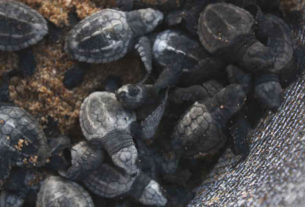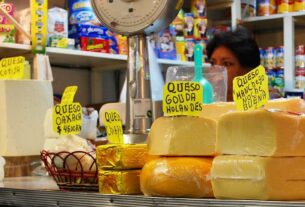Mexican Kitchen
Although rainy weather is an unpleasant thought, if not anathema, to those hoping for a little summer vacation sun-and-fun, the rainy season is one of my favorite times of the year here in central Mexico. Perhaps this is because there is such a long dry spell that by the time the rains come, they are vital to the still essentially agricultural local economy. Or maybe it’s the pattern of the rain itself: usually arriving late enough to allow hanging clothes out to dry in the morning sun, and everyone to get home for comida, before the skies open up to nourish the milpas and give everyone who has to go out again a brisk run.
Even those who may be less than enchanted with the soggy post-comida return to work will have to admit that the rain brings a more astounding variety than ever to the bounty in the markets. Corn and fresh chiles are stacked high, along with a number of herbs, both familiar and less well-known. Among the tastiest of the season’s offerings are the wild mushrooms, some of which are known as setas. I wrote about the different varieties of setas, and gave a recipe for Setas con Epazote in a previous column ( Mexico Connect, September ’98) This time I’d like to share some ways of preparing the rich, delicious and, in my opinion, unattractively named fungus known in English as “corn smut.”
This unappealing name is the translation of the Nahuatl name huitlacoche, classified as a mushroom by the Aztecs, who listed it as one of the six varieties of edible mushrooms, which Spanish chronicler Bernardino de Sahagún was told must be either cooked in a pot or toasted on a comal. The Maya, too, used huitlacoche, boiled, roasted or cooked as tamales in corn husks. (The Maya, in fact, classified the protein-rich mushrooms in the same food group as meat.)
A silver-grey spore mass, black on the inside when ripe, huitlacoche is a soil-borne organism that grows on the corn kernels themselves and is known botanically as usilago maydis. It is smooth and dry to the touch, spongy in texture, and becomes a rich, black puree as it cooks. Its taste has been compared to several European varieties of wild mushroom, and is often described as being “earthy.”
The trend in nouvelle Mexican cuisine leans heavily toward the use of pre-Hispanic ingredients, producing an increasingly higher demand for huitlacoche. Because this demand has spread north of the border, it is now easily found in supermarkets and Latin groceries, canned under the brand name Hérdez.
Huitlacoche goes best with the foods that are at the height of their season at the same time, a fact which the pre-Hispanic people knew without having to be told about food trends. Eating according to the seasons was healthy and tasty, as well as being necessary for survival, so they knew that corn, fresh green chiles and certain herbs (most notably epazote, which complements nearly any variety of mushroom) are perfect companions for huitlacoche.
Do not be afraid to experiment with huitlacoche; it can be used in place of, or in addition to, many other types of mushroom., and not just in Mexican dishes. I added some along with regular button mushrooms at the end of cooking a traditional recipe for boeuf bourguignonne and was rewarded with a deep, rich gravy and guests who wanted to know my “secret.”
One can of huitlacoche is equal to the amount found on four ears of corn, or approximately 1 pound of fresh corn smut. It is sensational in quesadillas, crepes, and egg dishes. It makes a great cream soup and is a natural with poblano chiles, which are piled high in the markets now, green and glossy, in attractive contrast to the bright yellow squash blossoms and multi-colored corn of this bountiful season.


